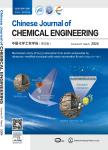Coalescence separation of oil water emulsion on amphiphobic fluorocarbon polymer and silica nanoparticles coated fiber-bed coalescer
Coalescence separation of oil water emulsion on amphiphobic fluorocarbon polymer and silica nanoparticles coated fiber-bed coalescer作者机构:CAS Key Laboratory of Green Process and EngineeringInstitute of Process EngineeringChinese Academy of SciencesBeijing 100190China University of Chinese Academy of SciencesBeijing 100049China Innovation Academy for Green ManufactureChinese Academy of SciencesBeijing 100190China
出 版 物:《Chinese Journal of Chemical Engineering》 (中国化学工程学报(英文版))
年 卷 期:2021年第34卷第8期
页 面:29-37页
核心收录:
学科分类:0710[理学-生物学] 083002[工学-环境工程] 0830[工学-环境科学与工程(可授工学、理学、农学学位)] 08[工学] 0817[工学-化学工程与技术] 080501[工学-材料物理与化学] 0805[工学-材料科学与工程(可授工学、理学学位)] 0703[理学-化学]
基 金:supported by the National Key Research and Development Program of China under the contract number of 2017YFB0308000 Program of Innovation Academy for Green Manufacture,CAS(IAGM2020C04) the State Key Laboratory of Heavy Oil Processing(SKLOP201903001) Key Research and Development Program of Hebei Province,China(20374001D)。
主 题:Oil–water separation Fluorocarbon polymer Amphiphobic Coalescence
摘 要:Discharging untreated oily wastewater into the environment disrupts the ecological balance,which is a global problem that requires urgent solutions.Superhydrophilic and superoleophilic fibrous medium(FM)effectively separated oil–water emulsion as it was hydrophobic underwater.But its separation efficiencies(SEs)first increased to 98.9%,then dropped to 97.6%in 10 min because of oil-fouling.To tackle this problem,FM deposited with 0%–10%silica nanoparticle(NPsFMs),then coated by fluorocarbon polymer(X-[CH_(2)CH_(2)O]nCH_(2)CH_(2)O-Y-NH-COOCH_(2)C4F9)(FCNPs FMs),was used to enhance its roughness and regulate its initial wettability to improve the anti-fouling property.FCFM and FCNPs FMs were hydrophobic and oleophobic in air and oleophobic underwater.Their water contact angles,oil contact angles and oil contact angles were 115.3°–121.1°,128.8°–136.5°,and 131.6°–136.7°,respectively,meeting the requirement of 90°–140°for coalescence separation.FCNPs FM-5 had the best separation performance with a constant value of 99.8%in 10 min,while that of FCNPs FM-10 slightly decreased to 99.5%.Theoretical released droplet(TRD)diameter,calculated by the square root of the product of pore radius and fiber diameter,was used for the evaluation of coalescence performance.Analyzed by two ideal models,TRD diameter and fiber diameter showed a parabola type relationship,proving that the separation efficiency was a collaborative work of wettability,pore size and fiber diameter.Also,it explained the SEs reduction from FCNPs FM-5 to FCNPs FM-10 was revelent to the three parameters.Moreover,FCNPsFMs effectively separated emulsions stabilized by cationic surfactant CTAB(SEs:97.3%–98.4%)and anionic surfactant SDBS(SEs:91.3%–93.4%).But they had an adverse effect on nonionic surfactant Tween-80 emulsion separation(SEs:94.0%–71.76%).Emulsions made by diverse oils can be effectively separated:octane(SEs:99.4%–100%),rapeseed oil(SEs:97.3%–98.8%),and diesel(SEs:95.2%–97.0%).These findings provide new insights for designing novel materials for oil–water separation by coalescence mechanism.



